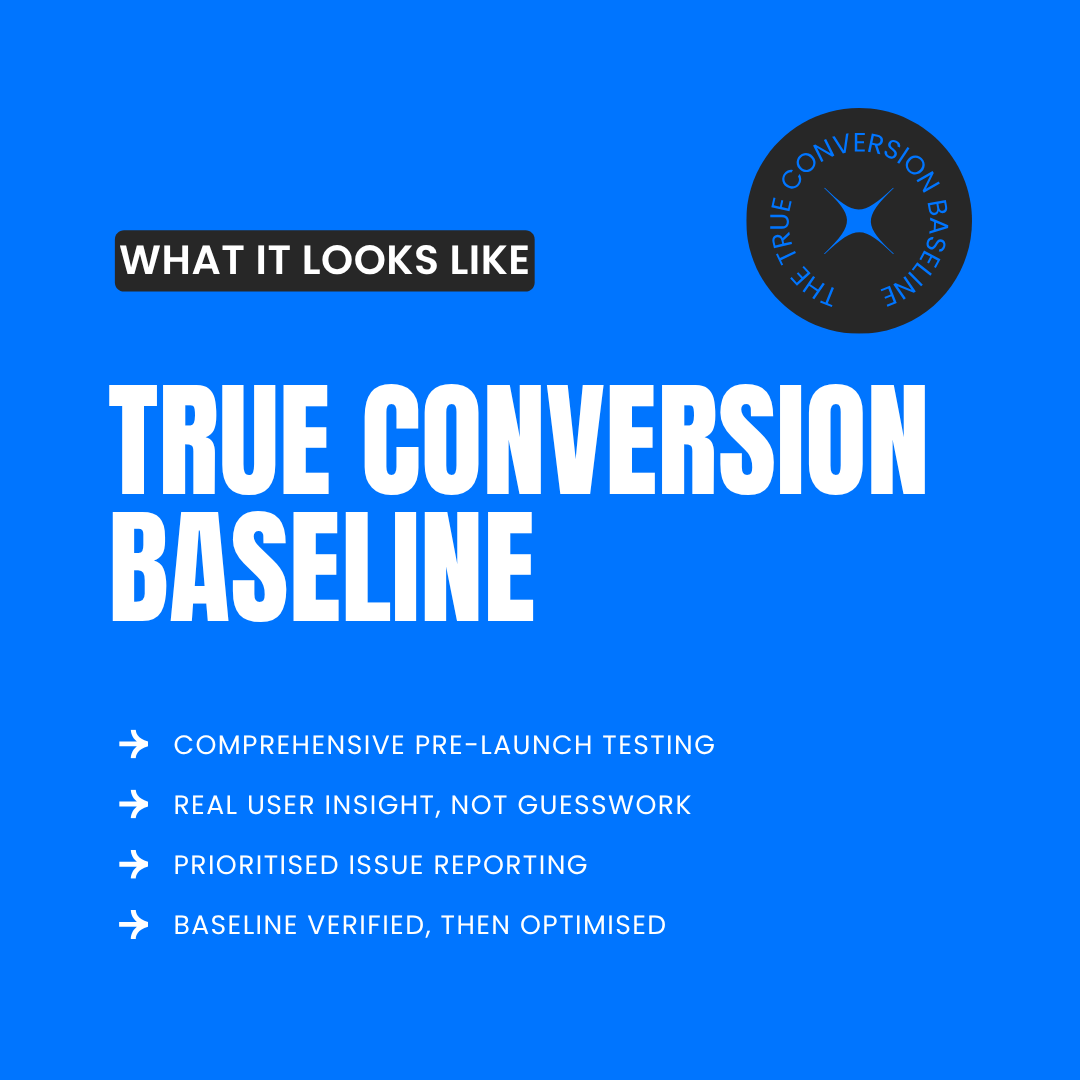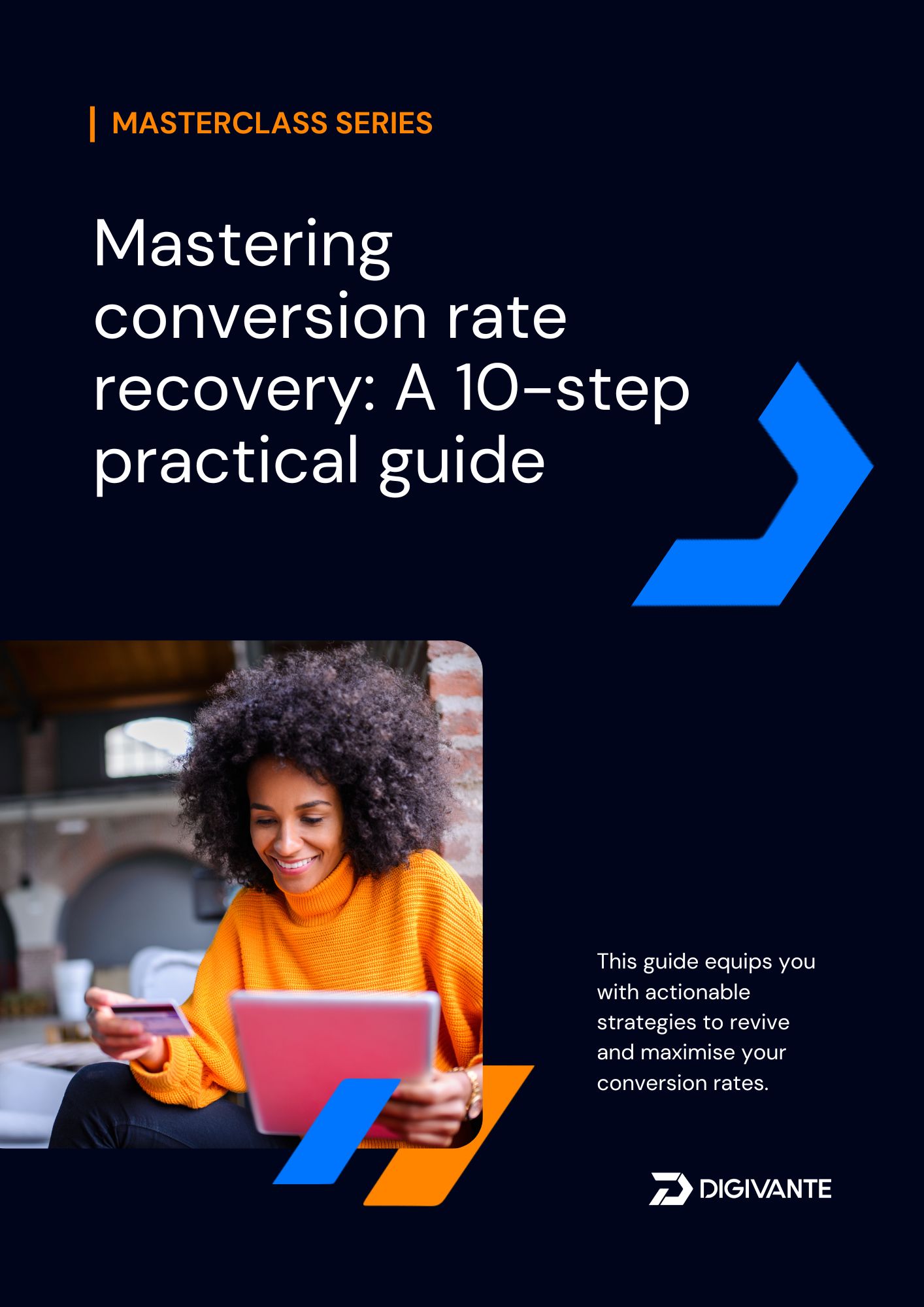Don’t build on shifting sand
You wouldn’t build a house on shifting sand, or assume the foundation is solid without checking it. Yet, many ecommerce leaders jump straight into CRO strategies, A/B tests, and paid campaigns without first verifying that their site fundamentals are working properly.

Here’s the cold, hard truth:
If defects or friction are hiding in your checkout or user journey, your “conversion rate” is a mirage, and every optimisation you make becomes unreliable.
So, before you double down on CRO or spend on ads, it’s time to uncover your true conversion rate – the solid benchmark every optimisation campaign needs.
Why the truth about your conversion rate matters
- You might be optimising the wrong thing
If 15% of users are dropping off due to a broken mobile button or a payment gateway error, you’re optimising a foundation that isn’t stable. High-volume campaigns only amplify the issue.
- CRO becomes a guessing game
Broken user flows can send A/B experiment results off-course. Wait for stable journeys, and your test results will actually reflect user preference – not just random noise.
- Budget waste without impact
You’re spending on marketing to bring traffic… but friction leaks value long before that. Fix it, then scale efforts.
What’s hiding behind the data?
Problems are often invisible in dashboards, but painfully obvious to users. Here’s what to look for:
- Functional bugs (forms not submitting, payment fails, promo codes dead)
- Friction in UX (confusing steps, unclear CTAs, navigation hiccups)
- Accessibility gaps (barriers for keyboard or screen-reader users)
- Device or browser issues (broken on Safari, buggy on Android)
- Regression fallout (old features that broke during updates)
Digivante tests for all of these, ensuring your baseline is stable before CRO begins.

The true conversion baseline: What it looks like
- Comprehensive pre-launch testing
From regression, payment, and usability to accessibility and cross-device tests, done thoroughly before sign-off. - Real user insight, not guesswork
We use crowdtesting across real devices and journeys, so you get a genuine sense of real-world performance. - Prioritised issue reporting
You receive evidence-rich logs and prioritised recommendations—not a wall of bugs. - Baseline verified, then optimise
With your foundation secure, CRO insights and PPC spend are now based on trust, not eyeballing.
What success looks like
- High, rock-solid conversion rates
- Confident CRO optimisation with clear results
- Ad spend that performs as expected
- Faster, hassle-free digital launches
Before you push CRO, try this:
- Run a quick smoke test before going live
- Do a crowdtested regression + usability review
- Plug results into your backlog – fix top issues first
- Compare new metrics to your extracts baseline
- Only then – launch A/B tests or boost campaigns
A conversion rate isn’t worth much if it’s artificially suppressed by hidden blockers.
Do the work upfront to stabilise your baseline, and you’ll find your CRO and ad strategies actually land – and land with impact.
Want to build your CRO on solid ground? Talk to us about uncovering your true conversion rate before you optimise. Let’s build a foundation you – and your data – can trust.






